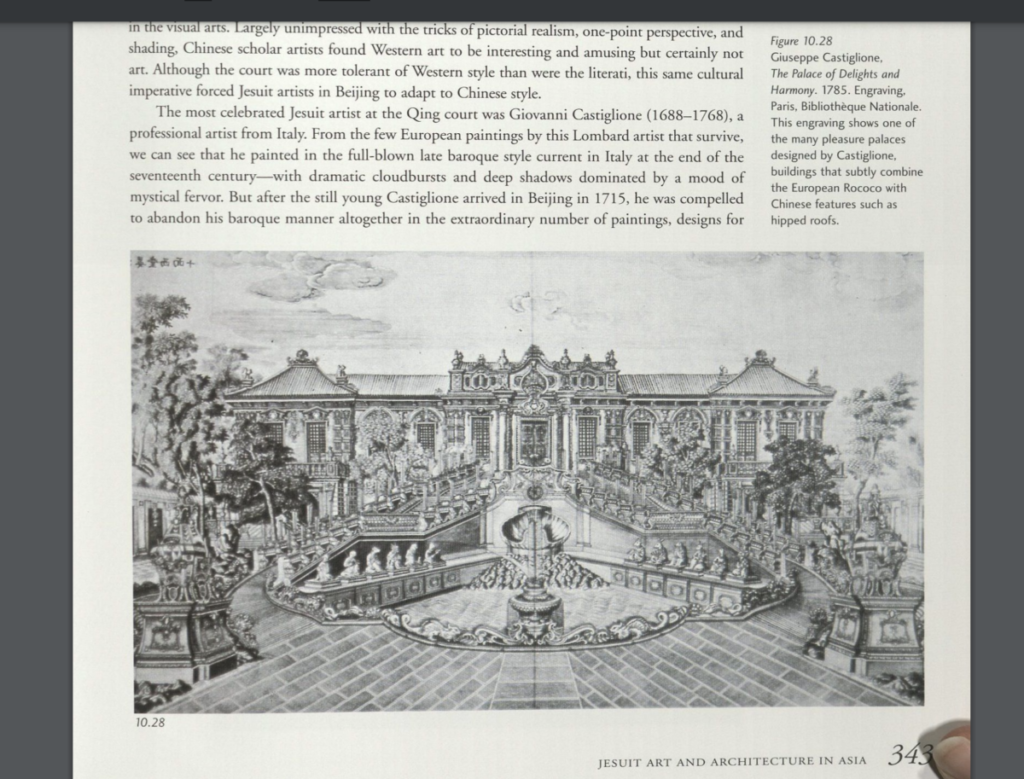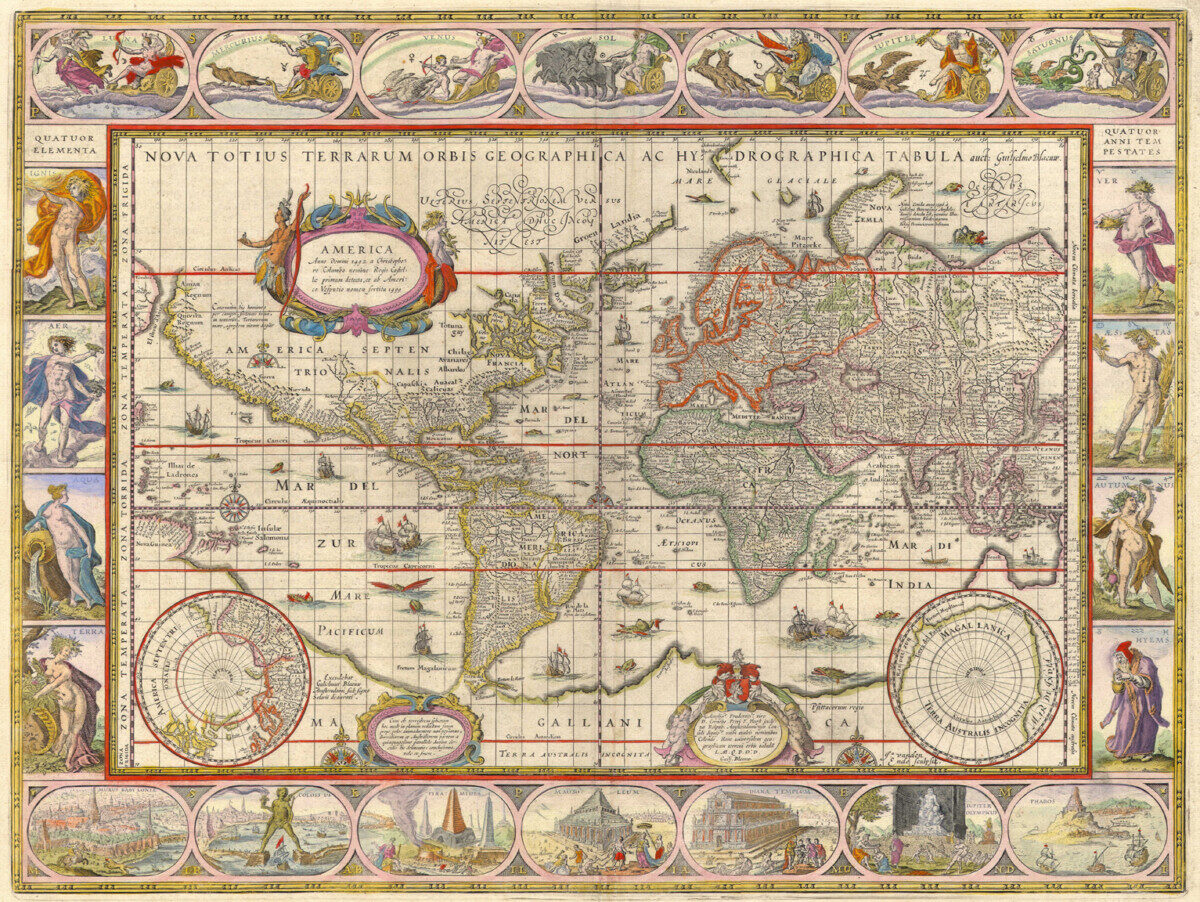One example from the book is Giuseppe Castiglione’s “The Palace of Delights and Harmony” is an ink and color on silk scroll painting that was created in ancient Beijing in the early 18th century. The painting depicts a scene from the Royal Garden that later was burn down by the invasion and includes a variety of elements such as landscape, buildings, and nature. The painting is notable for its detailed and realistic style, and it also incorporates both Chinese and European artistic techniques.
This painting connects to broader themes of Global Baroque art in several ways. To start with, the painting demonstrates the hybridity and cross-cultural exchange that characterized Global Baroque art. Castiglione is an Italian Jesuit missionary artist, and he incorporated Chinese artistic techniques and elements into his work, resulting in a unique style that reflects the blending of cultures. The painting reflects the grandeur that were typical of Baroque courtly art. In addition, the painting also exemplifies the religious and spiritual themes that were central to Baroque art. While “The Palace of Delights and Harmony” is not explicitly religious nor does the architecture is religious, but it reflects the importance of beauty, harmony, and balance that were considered important spiritual values in both European and Chinese cultures. In this sense, the painting is a testament to the Jesuit mission to evangelize China through art, by creating works that would appeal to the Chinese elite and promote Christian values. Therefore, Giuseppe Castiglione’s “The Palace of Delights and Harmony” is an excellent example of Global Baroque art, showcasing the hybridity and spiritual themes that characterized this period of art history.

